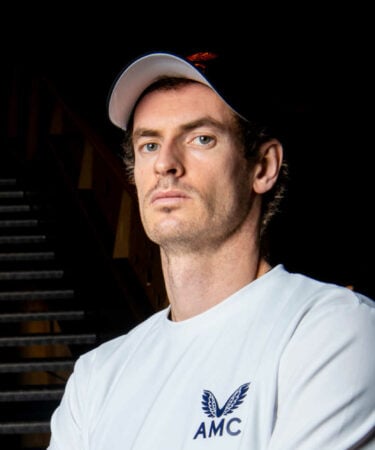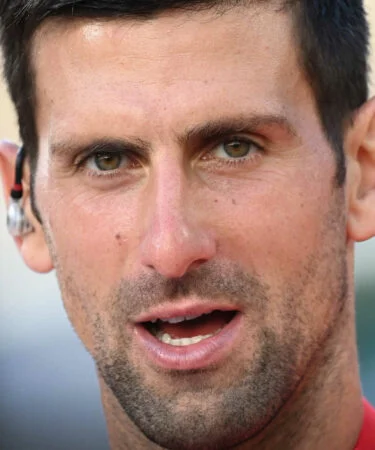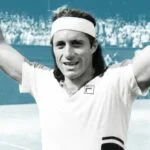Andy Murray’s legacy: “I would be happy if it might inspire other players to never give up”
I’ve always thought and written that there was the Big 4 and then everybody else. As Andy Murray heads to the Monte-Carlo Masters for the first time since 2017, does the fact that he is back to a really competitive level with a hip implant prove the case again?
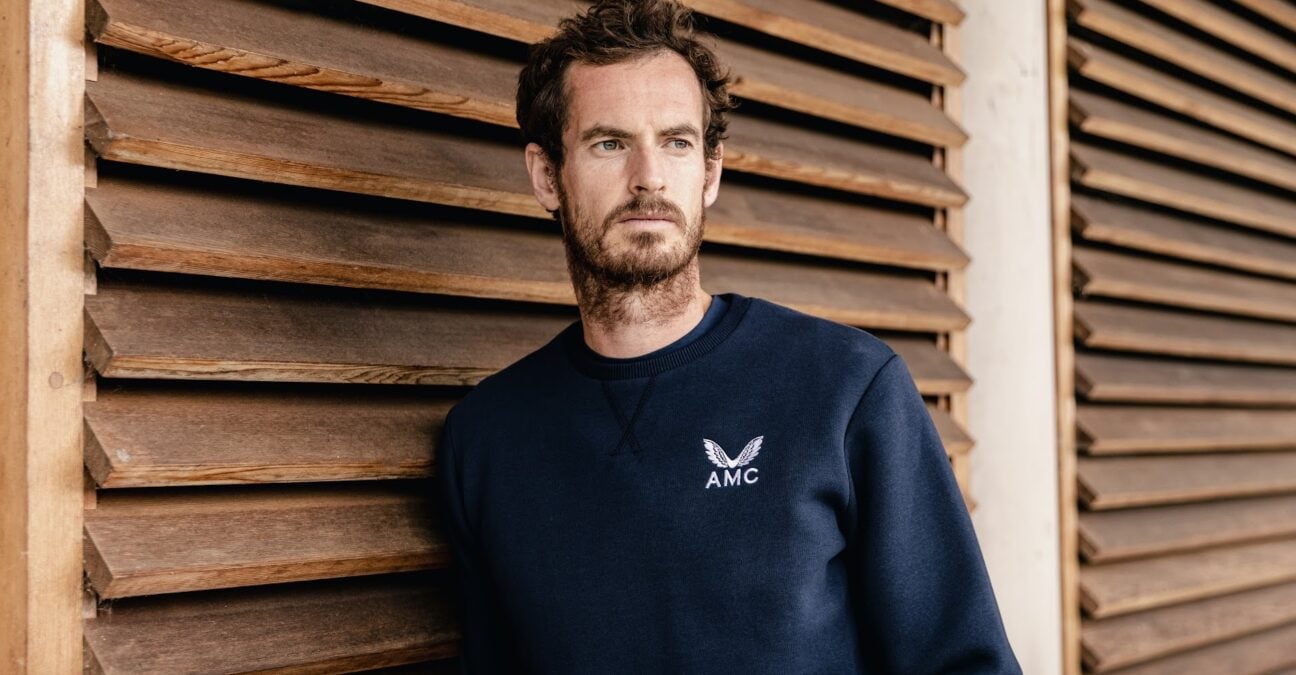 Andy Murray’s come-back is a never-before done performance whose consequences will matter.
Andy Murray’s come-back is a never-before done performance whose consequences will matter.
Not many people really believed Andy Murray, or any other professional singles player, could get back to a competitive high level with either a hip implant or a total hip replacement. And so he did, proving people wrong one more time as per his career trend. Watching Murray play this year had me wondering about what it meant for the medical field and for the future of the next great player to come with a severe hip injury: is Murray a unique extraordinary case or has science broken a new frontier?
Since he came back from his second hip surgery, performed in 2019 under the care of British surgeon Sarah Muirhead-Allwood, I used to close my eyes when Murray was on the run chasing balls. As the weeks and months went by, I’d just clench my jaw and cringe a bit. But since this Australian Open 2023 where we all watched him run for hours and win, my brain has stopped sending distress signals: I’m back to just watching Murray do his thing. It struck me while watching him play in Doha, and so my second thought was: this is insane. He’s running on a hip implant, he’s now winning on that hip implant and we’re now all acting like it’s business as usual.
Not long ago, top players Gustavo Kuerten and Magnus Norman had their careers terminated at a young age (32 and 28 respectively) by a hip injury. But today, Murray at almost 36 still runs around and drives his rivals nuts. Personally, my mind is blown. Should it be? Or are we just witnessing the new science being proved even more efficient than we would have thought? And as we’ll see along the way here, there might even be another procedure that specialists insist could achieve a greater result. Andy’s hip has put the spotlight on the field like nobody before.
“I know how lucky I am to be able to be playing again and really enjoying being back”: Murray
Let’s set the facts straight for a start: Murray had, at his second hip surgery, what is known as the “Birmingham hip resurfacing”: a surgical technique that avoids a full hip replacement, and so a prosthesis, by instead keeping more bone thanks to an implant. He had options to choose from and that was already way more than Kuerten and Norman had in their time. But even for Murray and his medical team, there were no practical cases to look at in tennis to make sure that, yes, he, a former world No1, was going to be able to be back at this level. Bob Bryan came back from it but in doubles. In top-level tennis right now, Andy remains a unicorn until proven otherwise.

And so, naturally, when the time will come to look at Murray’s legacy, his comeback from that hip surgery will perhaps be as much a part of it as his world No1 spot, his Grand Slams and Olympic medals.
“That’s not something I’ve really thought about,” he answered about this new legacy of his. “But I would be happy if it might inspire other players, particularly amateur tennis players, to never give up and believe that anything is possible. I think I’m really lucky to have had my surgery when I did, with a great team around me. Perhaps if I’d done it when Guga had his operations, things might have been different. I know how lucky I am to be able to be playing again and really enjoying being back on Tour and hope to be out there for a while yet.”
Ronan Treacy, from the Royal Orthopaedic Hospital of Birmingham, is one of the co-developers, with Derek McMinn, of the Birmingham Hip Resurfacing. And even he wasn’t daring to hope for such a comeback from Murray, so he insists that the Scot’s personality has to be taken into consideration. What he’s doing is not business as usual and will matter for the field as it shows that, with some extraordinary individuals, it can work.
“It is meaningful for our field but you have to remember that there are very few Andy Murrays”: Dr Ronan Treacy
“We had to walk before we could run with the implant because there was a big myth at the time, 30 years ago, that you really weren’t allowed to play any contact sport with a joint replacement,” he said. “It’s not a hip replacement but it’s a very significant procedure, and for the soft tissues, a hip resurfacing is probably even more intrusive than a hip replacement because you probably need a slightly bigger scar. You need extra rope to do the resurfacing. The real key with the resurfacing is that we retain so much more bone. The mobility with a regular total hip replacement is very good. But at extremes of movement, it’s not very safe, so you can have a dislocation. So with a resurfacing, you copy the size of the ball or the femoral head. So it’s exactly the same as your native one. So the ball is bigger, so the chances of dislocation are very much less, and that obviously gives the individual much more confidence to do more extreme activities. Clearly, Mr Murray is an extreme example, but we do expect to see, you know, the vast majority of our patients returning to sports after this procedure.”
And Murray’s story, for him, is still a fascinating one, because of how he pushes technology to extremes. “It is meaningful for our field but you have to remember that there are very few Andy Murrays. In Melbourne, it was quite incredible to watch him win this match after five hours, and at that time I said, ‘Well, congratulations to the hip but really greater congratulations to the mentality of the individual’. He is extraordinary. I operate on a lot of tennis players, on several professional tennis players, but they are usually at a different level and a bit older. I hadn’t really expected a professional tennis player to return to the very top of his level. We operate on a lot of sports people, and I specialise in martial arts people. But the problem with contact sports players and footballers and rugby players is that they all tend to be at the end of their careers by the time they come to us. So I guess Andy Murray was relatively unique.”
Should it inspire athletes from other sports? Treacy is fast to explain that in other sports, it’s actually a bit more common than in tennis, if not at the extreme that Murray is pushing it. “We’ve been aware of this for a long time,” he said. “There are some scientific papers that show about 80 percent of patients who did triathlons returned to that following hip resurfacing surgery. So, whilst Andy Murray is an extreme example because of his mentality and he plays at the very top of his game, which is remarkable, there are many people competing at a slightly lower level in different types of sports.”
Julien Varlet’s tennis career was terminated by a hip injury in 2004. He had no access to the new treatments at the time of his first two surgeries in 2005 and still did not when he had a full hip replacement in 2011 as the pain and limitations refused to go away. “I was just 33 years old and I couldn’t lace my shoes nor put on my socks any more. I went to see my surgeon to ask him what was exactly going to become of my quality of life in 10 years going like this. He agreed to operate on me but told me: ‘You’re the first healthy person that I’m operating on for this, usually it’s for 70-year-olds or people who have had accidents. You, it’s tennis that broke you.'”
“Each time I see him, I wonder how he does it”: Julien Varlet who went through three hip surgeries
Post-surgery, Varlet was back to riding a bicycle in a week and to playing tennis in two months. Three months later, he was skiing. Nowadays he can do all the sports he wants to and he’s totally pain-free. The prosthesis changed his life: when I called, he was just off from playing a two-hour doubles. Had the technique been as sure and mature when he first got injured, he’d have gone for it and would have probably been able to keep his doubles career (he was top 80) for as long as he wished. Here lies his only regret, aside from getting the first two surgeries “that were useless”, but he has none for his singles career as for him he’d have been unable to keep up with the demands. “I tried but it was crazy rough and I didn’t have the team support that Murray gets. I wasn’t at his level either! I had one hour of autonomy on the court. I couldn’t keep up.”
And so as someone who has been through hip injury and surgery, he’s floored by what Murray is achieving right now. “I have a tremendous respect for this guy, for what he’s doing physically but also mentally! He barely wins a match in under three hours, he keeps fighting. He loves the game, that’s for sure, because what it must be demanding from him on a daily basis is gigantic. It has to be from waking up to going to sleep: waking up the muscles, working on the hip mobility, warming it up, stretching, and playing. The constraint is huge.”
For Varlet, Murray is unique. “For sure! There will be studies on his case later because not only does he push his own body limits but he has to also be pushing the limits of the implant too. In tennis, you have to move in every direction so that’s why I’m amazed by what he’s doing. He’s even moving better now than some time ago and got more power back on his footwork when having to change direction which proves that this surgery helped. When I watched him in Australia playing for five hours… That guy is a monster! Each time I see him, I wonder how he does it. I’d love to spend just one day with him to see how he finds a way to play at this level. He’s pushing his body to limits that are sometimes scaring me but it’s his choice. I’m amazed but at the same time I wonder how long his body is going to be willing to put up with this.”
In tennis, even people with an amazing amount of experience are watching Murray in disbelief this year. Gebhard Gritsch, who was for years Novak Djokovic’s fitness trainer and has been in the front row at many of his player’s battles against Murray, never thought Andy could come back playing so well. “It is a big surprise for everyone, that Andy can play so well after having two hip surgeries. Generally, the pressure on the hips is tremendous in tennis and got even more when the players started sliding on hard courts. Stop and go is high impact, especially on the hip joints and many players had to stop because of hip issues. Also, a high percentage is even having issues after their career. I am not specifically informed about the procedures done in Andy’s case, but I can only show respect to the surgeon for doing such a great job and obviously to Andy for going through the tough rehab process with such a fantastic outcome. One has to hope that the material used in such surgeries is lasting for many years to compete and for an active life after retirement from the high-performance sport.”
As there are very few case studies for tennis, Murray becomes the unit of measure: how much can an athlete push that implant and for how long, for which results? He has become the scale for tennis. People from the medical field had actually reached out to him a lot when he was struggling, as he explained. “Yes, I have had a lot of messages from the medical community. I had many messages before my operation from doctors, chiropractors, physios, and osteopaths who had suggestions for things that might help. I obviously wasn’t able to follow up on all the recommendations and offers but I did appreciate that people were interested enough to reach out. I haven’t had as many messages since the op but I believe my surgeon now has a pretty long waiting list…”
Murray’s case has even pushed some top surgeons to devote pages on their own websites to answer recurring questions the general public and athletes have about the procedure. As surgeon Edwin P. Su explains on his own page: “Andy Murray is one of the most prominent athletes to have undergone hip resurfacing surgery in recent years. Because of this, hip resurfacing has been brought into the spotlight and many people, both patients and sports fans, are eager for more information about the procedure.” The market for athletes, professional or not, in need of hip procedures is a growing one so every success story can be turned into the equivalent of a commercial at the super bowl half-time.
Is hip resurfacing having now too much of a moment in tennis?
But Murray’s comeback has also made other surgeons raise an eyebrow, especially those who think the next frontier for such a top player would be to ditch resurfacing altogether, and so they are looking at tennis people’s enthusiasm over Murray’s situation with genuine perplexity. That’s the beauty of Murray’s comeback and the progress of this science: now players have options and so science has a debate. Not long ago, it was just a “yeah, sorry, your career is over” conclusion. If Murray is a unicorn in tennis, other sports have seen athletes come back at a very high level with another technique.
When I reached out to the expert on that side of the coin, Dr Alexis Nogier, a French orthopedic surgeon specialising in hip surgery, he went straight to the point. What Murray is achieving deserves attention, but the spotlight being set this much on his hip resurfacing might push tennis to a trend he personally doesn’t believe in.
“Talking with a lot of humility and no judgement, it’s just that now you have two very different philosophies going on: the English-speaking world’s one, which is dominating, and saying that one needs to do resurfacing and so with a big metal-on-metal diameter, and an invasive posterior approach that cuts through muscles, and it’s a technique that doesn’t work well at all for women. The French way is the complete opposite: we prone an anterior approach with custom-made implants, titanium anchors, and a sliding that is ceramic on ceramic. The advantage of this custom-made prosthesis is that it can be fitted to every body type. I operate on a lot of ballet dancers who are under 40 years old and seeing them back to their best level is always amazing. Cutting an athlete’s muscles is not something I believe in and want to do because I’m convinced it’s not how you give them the best chance to get back to their best level.”
“I will rejoice about an athlete’s recovery when they’re back at their best level”: Dr. Alexis Nogier
So Murray’s comeback has already had consequences on the scientific field in tennis as it puts resurfacing firmly in the front-row seat instead of what others might advocate for. “There’s no competition between surgeons,” insists Nogier, though. “One needs a lot of humility. Andy Murray is an example of extreme fame and there’s been a lot of communication around his surgery. I have a massive respect for the person who performed the surgery because it was for sure a very difficult case. So, yes, now in tennis the resurfacing is having a big moment but I’m working a lot with sports where also women are having hip injuries and, for them, the resurfacing is not a solution. It’s an important message to get through, and a technique that is not working for half of humanity is a suspicious one for me. The anterior approach is a French technique that is now spreading worldwide. We’re exporting ourselves slowly but surely (he smiles).”
Would he have still believed that a top tennis player could be back playing at the professional level either on an implant or a prosthesis? “It’s in the realm of possibility, yes. Hip prosthesis surgery is a mature technique nowadays and it works well. Then, the question for an athlete is a very simple one: after surgery, is that athlete back at the same level, at a better level, or at a lower level? Talking about Andy Murray, it wasn’t going to be back to No 1 but, top 10 at least. So I don’t share the overall enthusiasm of some of my colleagues because for me when the athlete isn’t back to his best level, you cannot call it a success. Andy Murray is an extremely gifted player, has extraordinary mental strength, and got surgery at a relatively young age, but yet the gap between his level before and after surgery remains important. I will rejoice about an athlete’s recovery when they’re back at their best level.”
“A technique that is not working for half of humanity…”: Nogier
Women might indeed be the next frontier for hip injuries in tennis. Dr Treacy, who agrees that resurfacing doesn’t work as well on women due to anatomy reasons but also more cases of metal allergies, sees then a new area of improvement for the hip implant. And he knows that still today in this field there are people who refuse to hear about the hip resurfacing.
“It’s been part of my life with my colleague, Mr Derek McMinn, for 30 years. But we don’t really think of our successes, we really just think of the struggle, of how we’ve had to try to convince people in different stages, that it was a worthwhile thing to do. And there are still many people today, who don’t think that it’s an operation that should be done. It’s a more difficult operation to be done. It’s not for every surgeon. And it’s not for every patient. I don’t believe that the implant is still at the best it can be but I still think it’s very difficult to invent something that is better than the ‘Birmingham hip’ for a male patient. So for me, it’s all about inventing something for females and smaller sizes. We’ve gone down the route of the polymotion, which is metal against plastic, but there’s a couple of other groups in the UK who have gone down the route of ceramic on ceramic.”
Still, watching Andy Murray being back to a competitive level is surely the first piece of evidence that was missing for tennis to really make progress in the way it deals with hip injuries on single players. He’s living proof that it no longer has to be a death sentence for one’s career. “Muzz” is opening doors that were sealed so that in the future others can be given the same chance with even more data to examine. “Today, we’re lucky to benefit from 50 years of experience from surgeons, from progress in manufacturing, from lessons taken from both failures and success,” recalls Ogier about a field that has now reached full maturity.

So much maturity that there’s nowadays barely any risk of breaking either the implant or the prosthesis. So it’s not like tennis people who are in awe of Murray are now pushing a too-good-to-be-true dream to others, nor that Andy is taking crazy risks with his health. We’re actually witnessing progress in action. Those “new hips” are solid.
“The biggest risks with that implant occur within the first six weeks of surgery,” explains Treacy. “So maybe 50 percent of failures that do occur, occur within the first six weeks of surgery. In male patients, the bigger the stature of the patient, the bigger the femoral head. Andy Murray is a big guy so I guess he has a big implant. The bigger the implant, the better the results in how long the implant lasts. And many papers show that in male patients, this implant looks normal at over 20 years. So I wouldn’t be expecting any surprises.”
Nogier agrees but calls for caution in the approach: “When it’s well set up, the risk is moderate but it becomes important if there’s a mechanical dysfunction. There’s no contraindication for high-level athletes with intensive careers, just the need to do a check-up a bit more often and most importantly to raise the alarm immediately if there’s a sign of mechanical dysfunction. It’s by the way another issue with the resurfacing: there can be metallic particles getting off and causing severe dysfunctions.”
For Treacy, however, one needs to bear in mind that Andy Murray’s personality might have been the make-or-break element of the story. “Again, he is an extraordinary individual,” insists Dr. Treacy. “But, as a sports writer, you must come across lots of different sports people, so you will know that maybe at the top one percent of the sporting level, it may not be down to ability but it might be down to the brain. And so I think in this particular case, that’s what it is. But it shows us that there is the potential for similar-minded people to return to very high levels.” There is no doubt that, for tennis, the more Murray keeps playing, the more information will be known to everybody involved. You always need a pioneer. Tennis players might actually also be, as a whole, the next frontier for hip procedures due to the extremes they’re putting their bodies through on a regular basis.
But one can’t ignore a final aspect of what it means to see Andy Murray fighting to get back to his top player track with a hip implant. In our awe for his resilience and in the hope it generates for the ones that will come after him to know that there really are options, there’s also a tiny voice in the back of our head that knows it would be better if Murray’s case was the final warning for this sport, because he is also highlighting a sport where young players are now needing surgical procedures that most people would only require after reaching 60 years old.
Murray is a call for tennis to finally stop breaking those hips
A sport that is now regularly destroying the hips of players aged 30 and under is a sport with a problem. While I watch Murray in awe, there’s a part of my brain that can’t help but feel he shouldn’t have been put through all that at this age. Sure, there are genetics and bad luck, but its not the whole story. So maybe Murray is also out there preventing the sport from denying that it has gone rogue on the hips, and is destroying careers but also the quality of life of those players after their careers. Maybe Murray limped for tennis to wake up.
We know that open-stance forehands damaged the generations that had to get into it as the game rapidly turned too fast for the good old closed-stance. But it’s not the whole picture. For both surgeons, Treacy and Nogier, it’s the training itself that is currently breaking those young hips.
“The reason why people get hip arthritis is multifactorial,” explains Treacy. “So part of it is your genetics, but there’s no doubt the amount of activity you do in your teenage years may well have an effect. If you’re doing an excessive amount of sport at that stage, whether it be football or high impact, it’s possible that it has an effect on the growing hip.” He wants to believe, though, that the lesson has now been learned and things are shifting. “I think throughout all sports now, people are more cognizant of that, and high-intensity training has really changed. Historically, some of the training was brutal but now is much more rhythmical as Pilates and more injury prevention is done too. So hopefully in the future, it won’t be something that permeates professional sport.”
“I don’t think you can underestimate how difficult the low points are, but you have to stick to the plan”: Murray
Dr Nogier isn’t as optimistic and still thinks that professional sports cannot avoid a wake-up call. Operating on such young people still hurts his heart a bit. “There’s way too much intensity nowadays during training for kids who are not done with their growth spurts (between 11 and 16 years old). Those training sessions are messing up the normal growth of the hip. A very talented young player will rapidly be sent to high-level training paths and so will, once he’s done with his growth at around 18, have major risks of hip deformities that are caused by way too intense training. Awareness has to kick in, especially in some federations – tennis included – where we see epidemics of hip injuries. I see more and more tennis players or judokas coming to me and they’re getting younger and younger. As a society, we keep putting the sport on a pedestal and so with rising financial stakes too. You watch a rugby match now and 30 years ago and you can see the drastic changes in musculature, speed, the violence of the shocks… But one needs to remember that no one has modified the human body in a century. Of course, it’s satisfying to give a new hip to a 30-year-old ballet dancer or a 25-year-old judoka but society will have to wonder at some point about the place it’s giving to the sport.”
Andy Murray wants his example to help players save their careers when people might tell them they’re over. In no way he would want his case to be used to downplay the severity of what he went through. What would he say to the next top player coming down the road he had just walked? “It was an incredibly tough time for me,” he said. “I tried to show that in my documentary. I don’t think you can underestimate how difficult the low points are, but you have to stick to the plan, work hard and surround yourself with good people who are on the journey with you.”
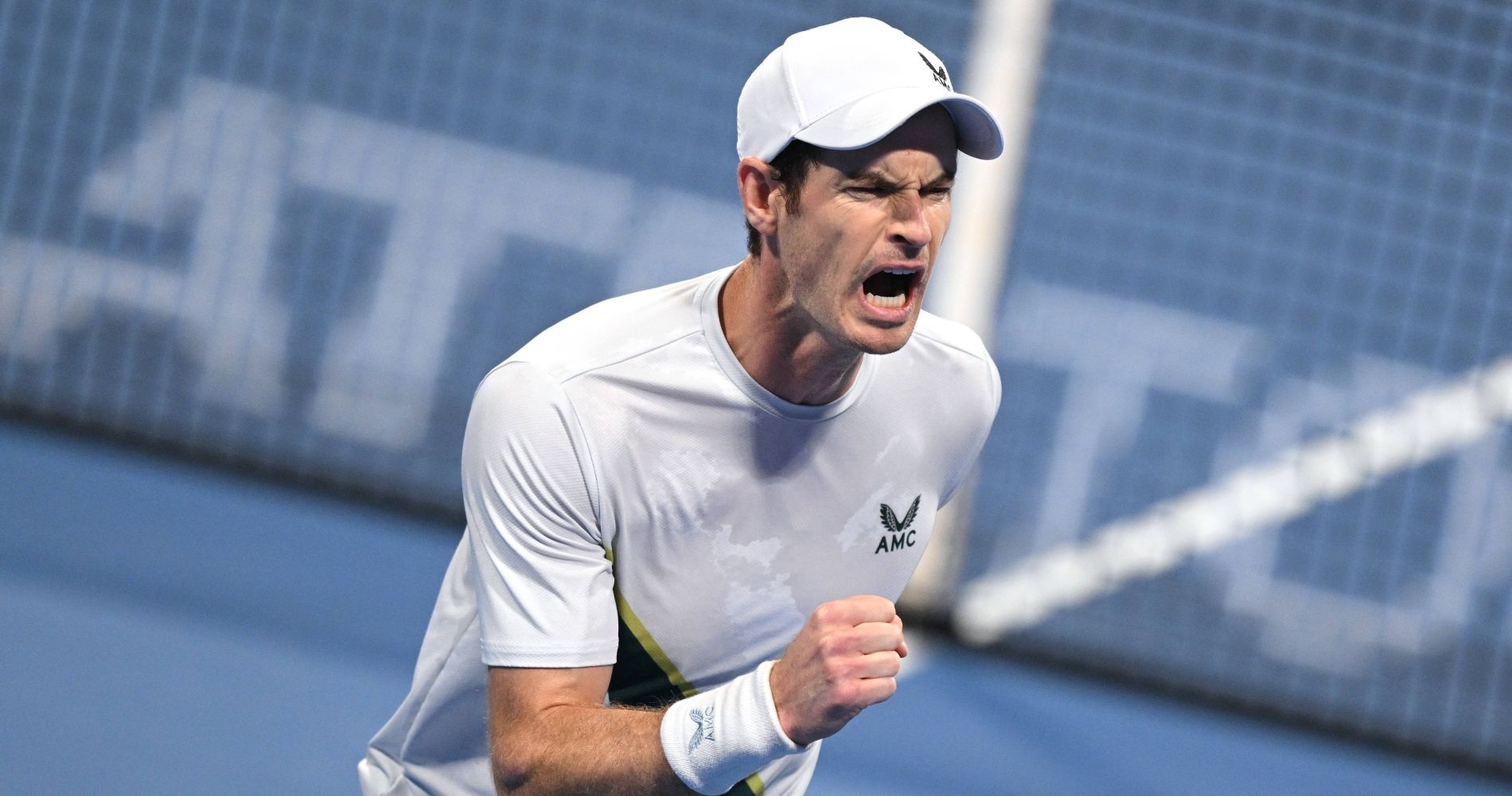
So in the end, yes, Andy Murray got injured at a time when science was finally ready to find a way to put a professional tennis player back on the biggest courts, and surely more importantly, was ready to prevent those young players from a level of pain in their everyday life that was unbearable. Yes, other athletes in other sports are also doing amazing things with implants or prostheses.
But, no, there was no way to predict that a former tennis world No 1 could come back from this, simply because nobody had ever done it. And there’s still nobody who would swear today that what Murray is doing can be replicated. In theory, yes, it can. In theory, yes, it could even be better. But on what is currently witnessed, Murray stands alone. He will without a doubt be a topic of debate and analysis for the medical community for many years to come. Andy Murray showed a way where there was none and that remains a wonder in itself. Next stop, Monte-Carlo.










